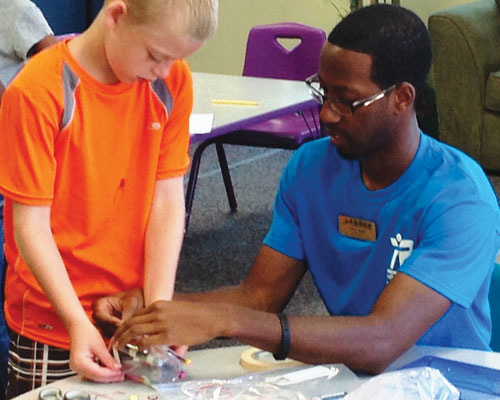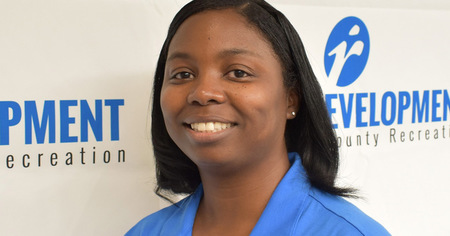Environment
- Ensure that the environment is kid-friendly safe, comfortable, and FUN!
- Create separate areas for different types of activity, as well as boundaries within the program to help set and maintain expectations.
- Create systems for storing materials that make them easily accessible and easily cleaned up—have cleaning supplies readily available, and then teach kids about how to use the materials and storage systems within the environment.
- For ideas on making the most of your space, see: Looking for STEM in all the Right Spaces Training Resource
Activities
- Plan activities and experiences that are developmentally appropriate, hands-on and minds-on, and engage student interests (combine things like art and STEM, STEM and movement).
- Include specific learning objectives and then use questions during experiences to further engage kids in learning.
- Practice advanced planning, but be flexible based on student needs.
- Make sure there are plenty of supplies and that supplies are gathered in advance of kids' arrival.
- Make sure everyone shares in the work—that it is not just led and implemented by the adults while the kids watch.
- For criteria to help evaluate STEM activities, see: How do I know if it's a good STEM activity? Meeting Resource
Schedule
- Ensure that basic needs are taken care of first –it's hard for kids to learn if they are hungry or need to use the restroom!
- Create a consistent schedule and use it, so kids know what to expect and can function within the security that this consistency provides.
- For additional information about how to develop a schedule for STEM learning and what should be included, see: A Program Schedule to Provide Structure for Group Management Meeting Resource
Your Relationships and Interactions
- Develop strong relationships with kids through high expectations and clear, positive interactions.
- Use intentional open-ended questions to build relationships and encourage critical thinking.
- Respond genuinely to kids' questions, progress and excitement.
- Establish group norms and consistent group attention getting signals.
- Use nonverbal signals and establish proximity to communicate with the group or individuals without disruption.
- Use a variety of cooperative learning grouping strategies to help kids create groups in a systematic and fun way and teach kids how to work together!
- For additional resources to develop group management skills, see: Interactions in Action: Training Resource A Group Management in STEM: Checklist for Interactions, and Strategies for Group Management Meeting Resource
When you follow the tips above—doing the necessary planning and preparation beforehand and then focusing on relationships and interactions with children and youth once they arrive—facilitating STEM experiences will not only be EASY, but will provide fruitful and fun learning for everyone!
Written by Heidi Ham, Vice President of Programs and Strategy for the National Afterschool Association (NAA). This blog originally appeared in Click2Science, an interactive professional development site for trainers, site directors and frontline staff/volunteers working in OST STEM programs serving children and youth. Learn more at www.click2sciencepd.org.
Photo courtesy of Click2Science.




